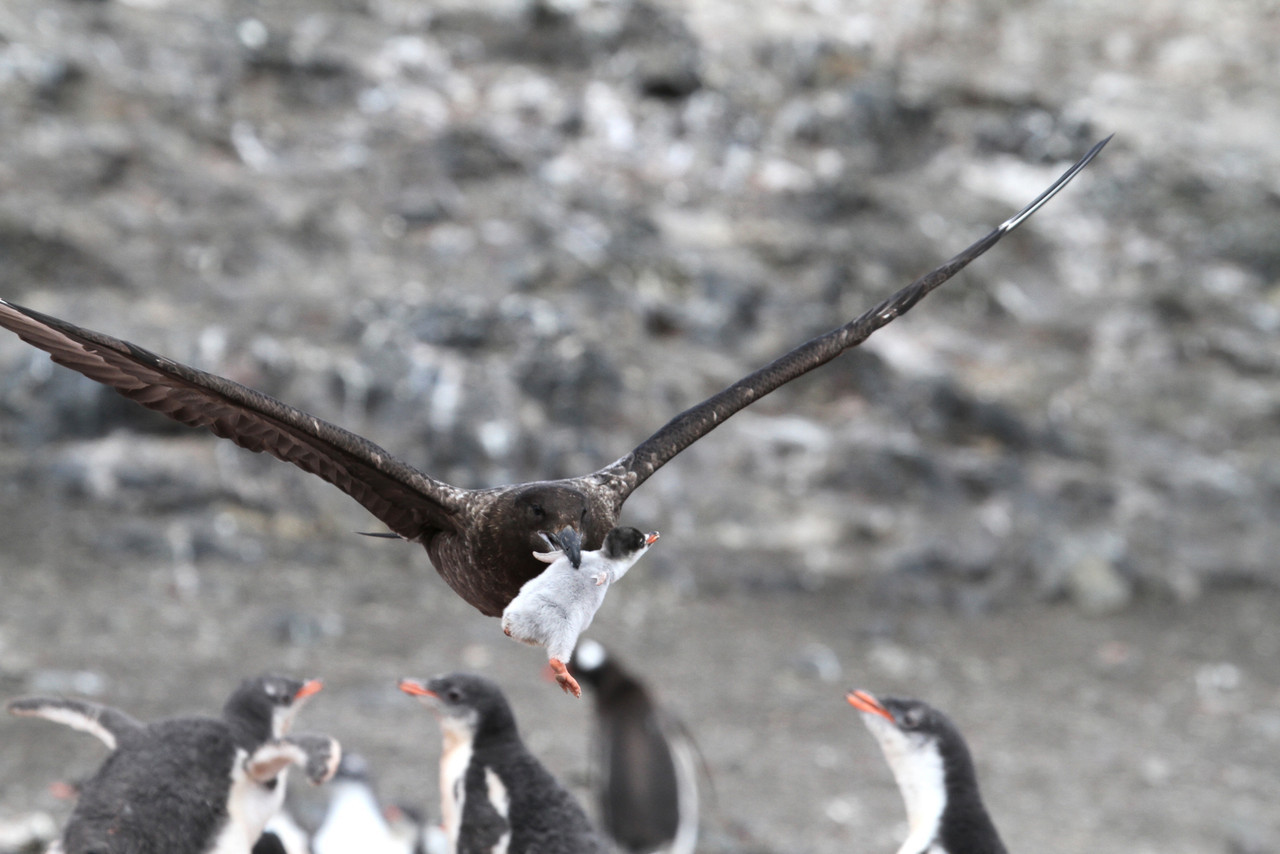Difference between revisions of "Template:POTD protected"
Jump to navigation
Jump to search
Westarctica (talk | contribs) |
Westarctica (talk | contribs) |
||
| (128 intermediate revisions by the same user not shown) | |||
| Line 1: | Line 1: | ||
{| role="presentation" style="margin:0 3px 3px; width:100%; text-align:left; background-color:transparent; border-collapse: collapse; " | {| role="presentation" style="margin:0 3px 3px; width:100%; text-align:left; background-color:transparent; border-collapse: collapse; " | ||
|style="padding:0 0.9em 0 0;" | [[File: | |style="padding:0 0.9em 0 0;" | [[File:Brown Suka eating chick.jpg|300px|thumb]] | ||
|style="padding:0 6px 0 0"| | |style="padding:0 6px 0 0"| | ||
'''[[ | The '''[[Brown Skua]]''' is a large seabird that breeds in the subantarctic and [[Antarctica|Antarctic]] zones and moves further north when not breeding. | ||
Brown skuas are masters of piracy, they often feed by stealing partially digested fish from the the beaks of other birds. Their victims are typically terns or [[penguin]]s, though other fish-eating species are also pursued until they disgorge their catches. The fact that skuas are swift and agile fliers (and that they sometimes gang up on a single victim) aid in their success rate. This is the heaviest species of skua and rivals even the largest gulls as the heaviest species in the shorebird order although not as large in length or wingspan. | |||
<p><small>Photographer: Jenny Varley</small></p> | |||
[[:Category:Images|'''(More Images)''']] | |||
<p><small>Photographer: | |||
[[:Category:Images|'''(More | |||
<div class="potd-recent" style="text-align:right;"> | <div class="potd-recent" style="text-align:right;"> | ||
Latest revision as of 14:07, 16 April 2024
|
The Brown Skua is a large seabird that breeds in the subantarctic and Antarctic zones and moves further north when not breeding. Brown skuas are masters of piracy, they often feed by stealing partially digested fish from the the beaks of other birds. Their victims are typically terns or penguins, though other fish-eating species are also pursued until they disgorge their catches. The fact that skuas are swift and agile fliers (and that they sometimes gang up on a single victim) aid in their success rate. This is the heaviest species of skua and rivals even the largest gulls as the heaviest species in the shorebird order although not as large in length or wingspan. Photographer: Jenny Varley |
